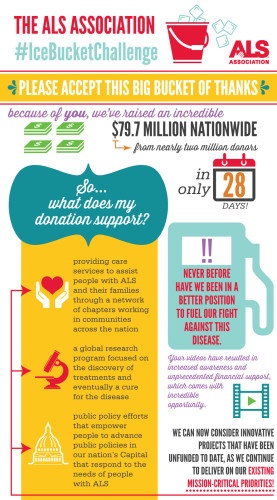Read the first post in this series.
 Unless you were living under a rock during the summer of 2014, you likely heard about a little phenomenon called the ALS “Ice Bucket Challenge.” The viral social media campaign, encouraging friends to challenge others to give and/or dump a bucket of ice over their heads, raised more than $115 million to fund ALS research.
Unless you were living under a rock during the summer of 2014, you likely heard about a little phenomenon called the ALS “Ice Bucket Challenge.” The viral social media campaign, encouraging friends to challenge others to give and/or dump a bucket of ice over their heads, raised more than $115 million to fund ALS research.
It was fantastic news for anyone facing this disease, and it also has given nonprofit leaders much to learn from. Despite the challenges inherent in adding upwards of three million new donors to your system in only a few weeks, the organization has modeled several important strategies for stewarding a gift. While your cause might not generate such a viral response, these strategies will still serve you well.
- Due to high volume of gifts, the Foundation knew that they would not be able to send formal mailed acknowledgements in as timely a manner as they would like. So, once you made your online donation, they told you that. But more importantly, they gave you information to make you feel even better about your gift. (see image above)
- They’ve dedicated several pages on their website to saying thank you and informing donors about what will happen to their gift. Check it out for yourself.
- They emailed a thank you video to everyone who donated, offering not just a sincere thank you but a chance to relive the experience again – well, without the icy shock of water being dumped over your head.
How can you make your non-profits stewardship strategies work harder to share your message and encourage future participation?
Soon I’ll share one more example of a thank you done right.

